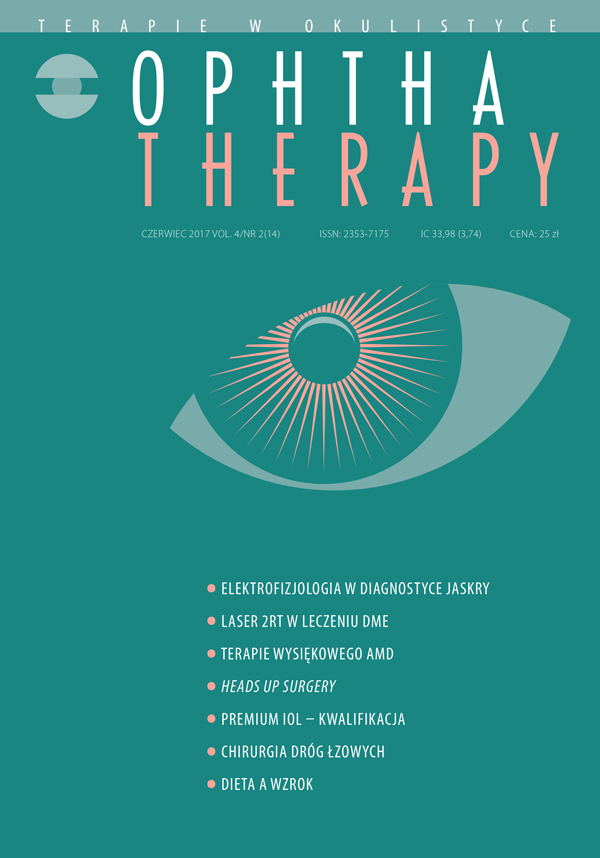Nutrients which affect the eye condition
Main Article Content
Abstract
Diet has a major impact on the human body. Researchers indicate that a well-balanced diet may partially prevent the dry eye syndrome and contact lens discomfort. It may also slow down the aging process of the eye. Protection of the eye with the help of dietary supplementation has been a subject of research since the previous century. The paper presents the most important conclusions on the significance of diet for healthy eyesight.
Downloads
Article Details

This work is licensed under a Creative Commons Attribution-NonCommercial-NoDerivatives 4.0 International License.
Copyright: © Medical Education sp. z o.o. License allowing third parties to copy and redistribute the material in any medium or format and to remix, transform, and build upon the material, provided the original work is properly cited and states its license.
Address reprint requests to: Medical Education, Marcin Kuźma (marcin.kuzma@mededu.pl)
References
2. Evans JR, Lawrenson JG. A review of the evidence for dietary interventions in preventing or slowing the progression of age-related macular degeneration. Ophthalmic Physiol Opt. 2014; 34(4): 390-6.
3. Foster-Powell K, Holt SH, Brand-Miller JC. International table of glycemic index and glycemic load values: 2002. Am J Clinical Nutrtion. 2002; 76: 5-56.
4. Chong EW, Robman LD, Simpson JA et al. Fat consumption and its association with age-related macular degeneration. Arch Ophthalmol. 2009; 127: 674-80.
5. Angle J, Wissmann DA. The epidemiology of myopia. Am J Epidemiol. 1980; 111: 220-28.
6. Au Eong KG, Tay TH, Lim MK. Race, culture and Myopia in 110,236 young Singaporean males. Singapore Med J. 1993; 34: 29-32.
7. Ibanez L. Hyperinsulinaemia, dyslipaemia and cardiovascular risk in girls with a history of premature pubarche. Diabetologia. 1998; 41: 1057-63.
8. Brzozowska A, Olędzka A. Suplementacja diety jako droga do poprawy stanu odżywienia i stanu zdrowia ludności. In: Gawęcki J., Roszkowski W. (ed). Żywienie człowieka a zdrowie publiczne. PWN, Warszawa 2009: 313-28.

